#George of Poděbrady
Text

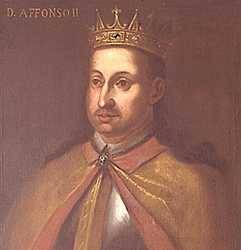
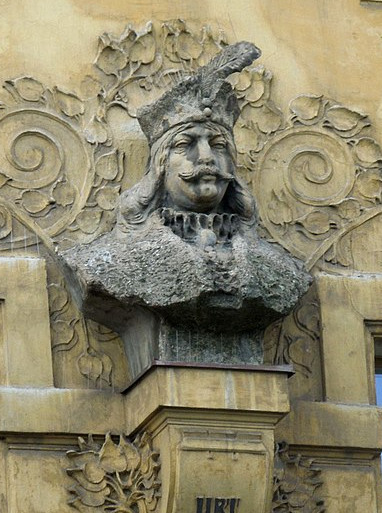

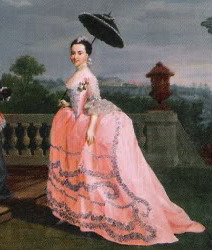





Royal Birthdays for today, April 23rd:
Malcolm IV, King of Scotland, 1141
Afonso II, King of Portugal, 1185
George of Poděbrady, King of Bohemia, 1420
Joan of France, Queen of France, 1464
Charlotte Amalie of Holstein-Plön, Duchess of Schleswig-Holstein-Sonderburg-Augustenburg, 1744
Aisha bint Al Hussein, Princess of Jordan, 1968
Zein bint Al Hussein, Princess of Jordan, 1968
Gabriella Kingston, Daughter of Prince Michael of Kent, 1981
Laetitia Maria of Belgium, Archduchess of Austria-Este, 2003
Louis of Wales, British Prince, 2018
#prince louis#Laetitia Maria of Belgium#Gabriella Kingston#Zein bint Al Hussein#Aisha bint Al Hussein#Charlotte Amalie of Holstein-Plön#joan of france#George of Poděbrady#afonso ii#malcolm iv#long live the queue#royal birthdays
18 notes
·
View notes
Text
Events 3.2 (before 1910)
537 – Siege of Rome: The Ostrogoth army under king Vitiges begins the siege of the capital. Belisarius conducts a delaying action outside the Flaminian Gate; he and a detachment of his bucellarii are almost cut off.
986 – Louis V becomes the last Carolingian king of West Francia after the death of his father, Lothaire.
1331 – Fall of Nicaea to the Ottoman Turks after a siege.
1444 – Skanderbeg organizes a group of Albanian nobles to form the League of Lezhë.
1458 – George of Poděbrady is chosen as the king of Bohemia.
1476 – Burgundian Wars: The Old Swiss Confederacy hands Charles the Bold, Duke of Burgundy, a major defeat in the Battle of Grandson in Canton of Neuchâtel.
1484 – The College of Arms is formally incorporated by Royal Charter signed by King Richard III of England.
1498 – Vasco da Gama's fleet visits the Island of Mozambique.
1657 – The Great Fire of Meireki begins in Edo (now Tokyo), Japan, causing more than 100,000 deaths before it exhausts itself three days later.
1776 – American Revolutionary War: Patriot militia units attempt to prevent capture of supply ships in and around the Savannah River by a small fleet of the Royal Navy in the Battle of the Rice Boats.
1791 – Claude Chappe demonstrates the first semaphore line near Paris.
1797 – The Bank of England issues the first one-pound and two-pound banknotes.
1807 – The U.S. Congress passes the Act Prohibiting Importation of Slaves, disallowing the importation of new slaves into the country.
1811 – Argentine War of Independence: A royalist fleet defeats a small flotilla of revolutionary ships in the Battle of San Nicolás on the River Plate.
1815 – Signing of the Kandyan Convention treaty by British invaders and the leaders of the Kingdom of Kandy.
1836 – Texas Revolution: The Declaration of independence of the Republic of Texas from Mexico is adopted.
1855 – Alexander II becomes Tsar of Russia.
1859 – The two-day Great Slave Auction, the largest such auction in United States history, begins.
1865 – East Cape War: The Völkner Incident in New Zealand.
1867 – The U.S. Congress passes the first Reconstruction Act.
1877 – Just two days before inauguration, the U.S. Congress declares Rutherford B. Hayes the winner of the 1876 U.S. presidential election even though Samuel J. Tilden had won the popular vote.
1882 – Queen Victoria narrowly escapes an assassination attempt by Roderick Maclean in Windsor.
1901 – United States Steel Corporation is founded as a result of a merger between Carnegie Steel Company and Federal Steel Company which became the first corporation in the world with a market capital over $1 billion.
1901 – The U.S. Congress passes the Platt Amendment limiting the autonomy of Cuba, as a condition of the withdrawal of American troops.
1903 – In New York City the Martha Washington Hotel opens, becoming the first hotel exclusively for women.
0 notes
Photo

Johanna of Rožmitál - Queen of Bohemia
Johanna of Rožmitál (c.1430-1475) was the second wife of George of Poděbrady, king of Bohemia , present-day Czech Republic. She came from a family that was both Catholic and Hussite. A true co-ruler, she played an important role in public affairs and used her contacts and skills to strengthen her power and mediate between the different factions. She appeared in public as a symbol of the land’s government.
She also commanded her own troops in battle. In 1461, she offered to send her army to the help of the duke of Bavaria. In 1470, Bohemia was invaded by King Matthias of Hungary. Johanna quickly raised troops in a time where standing armies were uncommon. Polish chronicler Jan Długosz wrote that she attacked the invader from the front while her husband pressed from the rear. Together, the monarchs repelled the enemy.
Johanna retired from political life after being widowed. In 1474, she stated that she enjoyed the fact of no longer having to lead troops in war. She nonetheless came out of her retirement to support the new king’s rule
Bibliography:
Klassen John, “Johanna of Rožmitál”, in: Higham Robin, Pennington Reina (ed.), Amazons to fighter pilots, biographical dictionary of military women, vol.1
Sághy Marianne, Women and Power in East Central Europe
#Johanna of Rožmitál#15th century#perioddramaedit#historyedit#women in history#warrior women#queens#warrior queens#Hussite wars#czech history#bohemia#czech republic#women warriors#badass women#middle ages#medieval women#medieval history#moodboard#history mooboard#aesthetic
74 notes
·
View notes
Photo

Prayer Book of George of Poděbrady
Illuminated by Valentin Noh and the Master of the Schellenberg Bible
http://ica.themorgan.org/manuscript/thumbs/159974
7 notes
·
View notes
Note
“hi, I’m not from the US” ask set (if I'm not too late this..): 4, 7 & 17?
4.favourite dish specific for your country? - It´s really hard to decide. I love typical czech cuisine. I love our “Svíčková na smetaně” - “Roast sirloin in sour cream sauce with dumplings”
“Vepřo, knedlo, zelo” - Roast pork with dumplings and sauerkraut,
“Pečená kachna s knedlíky a dvěma druhy zelí” - Roast duck with dumplings and two kinds of sauerkraut.
“Hovězí guláš” - Beef goulash and
“Švestkové knedlíky” - Dumplings filled with plums.
I think, that on the first place I would put Roast duck with dumplings and two kinds of sauerkraut.
From soups I love typical “Kulajda” - Dill soup and “Zelňačka” - Cabbage soup.
7.three words from your native language that you like the most?
That is fun. I am from east part of the Czech republic, Ostravsko and there we have fantastic dialect. It´s historically industrial part of the country, but mines were already closed in 90´s. So people were “raw”, very hard working and dialect is like that. We have amazing curse words: cyp, chumaj, chuj... That is dialect. And standard czech language is very beautiful. I love it. I love mainly czech language presented by our great writer Alois Jirásek. Three words from standard czech: maminka, tajtrlík, studánka.
17.are you interested in your country’s history?
Very much. I studied history on university. We have so amazing history. Our heritage is rich. Karel Čapek, Jaroslav Seifert, Czech baroque, Tamara and Věra radar system (passive sensor) of thirdgeneration, able to recognize targets of “stealth” type; Semtex worldwideknown explosives,
Prokop Diviš - lightning rod inventor, Jan Evangelista Purkyně - anatomist and physiologist of the first half of 19th century, discovererof Purkinje cells in the brain (1837), Bedřich Hrozný - orientalist and linguist who deciphered the ancient Hittite language, Gregor Mendel: the founder of the modernscience of genetics, in Czechia born and working, Jaroslav Heyrovský - the inventor of the polarographic method, father of the electroanalyticalmethod.
Otto Wichterle -inventor of soft contact lenses,
Antonín Holý - chemist of world recognition, inventorof the most effective drugs in the fight against the AIDS epidemic.
St.Adalbert of Prague (inCzech svatý Vojtěch): Czechpriest, bishop of Prague, who brought Christianity to nations of Central Europe- Hungarians, Poles, and Prussians.
PřemyslOtakar II: Czech king, ruler of seven other countries, his reignstretched from Silesia to the Adriatic coast, founder of many towns and citiesnot only in Czech kingdom, but in contemporary Poland and Prussia (13thcentury).
Charles IV:Holy Roman Emperor. probably the most famous personality of the Czech stateever. He rebuilt the city of Prague as the capital of Central Europe and one ofthe intellectual and cultural centers of Europe. In 1348, he founded theCharles University in Prague, which was named after him and was the firstuniversity in Central Europe and third in Europe.
Jan Hus - theologian, Catholic priest, philosopher, whobecame a church reformer, an inspirer of Hussitism, a key predecessor toProtestantism and a seminal figure in the Czech Reformation (14–15thcent).
King George of Poděbrady(Jiří z Poděbrad) - well known for his idea and attempt toestablish common European institutions and supranational insignia. It is seenas the first historical vision of an European unity forgoing the European Union(15th century).
Comenius(Jan Ámos Komenský) - inventor in educational systems, theory ofeducation, practical educational work, methods of education (17th cent.);
Jan Žižka: Czech general,a contemporary and follower of Jan Hus, successful Hussite military leader(died 1424). He is considered to be among the greatest military leaders andinnovators of all time. His accomplishments in this regard are especiallyunique and noteworthy as he had to quickly train peasants to repeatedly facehighly trained and armored opponents who usually severely outnumbered his owntroops, and for this, some have considered him to be the greatest general inhistory. Žižka developed tactics of using wagon forts, called vozováhradba in Czech (wagons fortification) as mobile fortifications,predecessors of tanks, with original armament of soldiers, incl.various lightand heavy firearms,
Josef František - fighter pilotof World War II, the highest-scoring Allied ace in the Battle of Britain (1940),
Czech words, which became international - robot (invented by Karel Čapek in hisstage-play R.U.R., derived from the word “robota”, which was a compulsoryunpaid work for landowners in the past), pistol(from Czech word “píšťala”), houfnice(English “howitzer”), polka, dollar(from Czech word “tolar”), hocus-pocus,tunel (in the sense of “tunnel the bank” - to rob the bank’s assets bytransferring money elsewhere by its own owners).
Sportsmen: Emil Zátopek - long-distance runner, only person towin the 5,000 metres, 10,000 metres, and marathon in the same Olympics, Věra Čáslavská - sevenOlympic gold medals holder in gymnastics, all in individual events, which is anall-time record among female Olympians, Martina Navrátilová - tennis player, arguably the bestfemale tennis player of all time, multiple winner of women’s singles title atWimbledon, Jaromír Jágr -ice hockey player, the best European player in the history of Canadian-AmericanNational Hockey League, ranking overall 2nd in points, third in goal scores,and first in the number of game-winning goals in all history of NHL.
3 notes
·
View notes
Text
Ha! So, Wenceslaus IV of Bohemia, who ruled my country between 1376 and 1400, was apparently into men (source - in Czech, sorry), just like Hynek, the son of George of Poděbrady, and possibly even Eugen of Savoy, too. And I’ve always thought that Czech history was boring *snorts*

56 notes
·
View notes
Photo

🤩 The.amazing Strahov Library in Prague!! After his pilgrimage to the Holy Land in 1138, the bishop of Olomouc, Jindřich Zdík, took hold of the idea of founding a monastery of regular canons in Prague. He had the support of the bishops of Prague and Soběslav I, Duke of Bohemia and—after his death—Vladislav II. After Zdík's first unsuccessful attempt to found a Czech variant of the canons' order at the place called Strahov in 1140, an invitation was issued to the Premonstratensians, whose first representatives arrived from Steinfeld in the Rhinevalley (now Germany). 🤩The monks began to build their monastery first of wood, with a Romanesque basilica as the center of all spiritual events in Strahov. The building was gradually completed and the construction of the monastery stone buildings continued, in order to replace the provisional wooden living quarters with permanent stone. In 1258, the monastery was heavily damaged by fire and later renewed. 🤩The monastery continued functioning until the period of the Hussites, when it was attacked and plundered by the citizens of Prague in 1420. Books, articles of worship, and the furnishings of both church and convent were burned. Although the building did not sustain great damage from an architectural viewpoint, the monastery took a long time to recover. During the Hussite Wars, the years of the reign of George of Poděbrady, and the time up to the end of the 16th century, Strahov was relatively moribund. Attempts were made by various officials to renew the original monastery and its religious life, but they were unsuccessful. It was not until the arrival of the abbot Jan Loheliusthat a turn came about. This cleric, originally of Teplá Abbey, became the abbot of Strahov in 1586 and all his abilities were devoted to the renewal of Strahov. He tried to raise the spiritual life of the monastery and, as a visitator circarie of the Premonstratensian order as a whole in Bohemia, he also devoted attention to the material aspect of things. https://www.instagram.com/p/B0TRbIWnhF_/?igshid=k6qigm2qsg80
0 notes
Photo
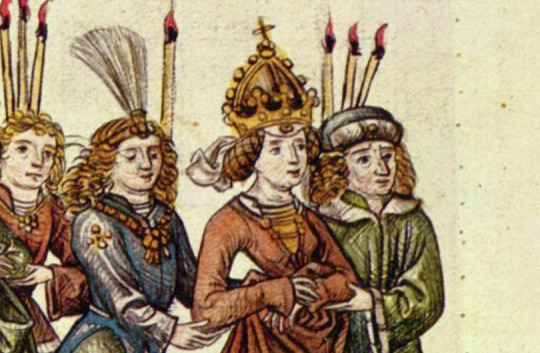
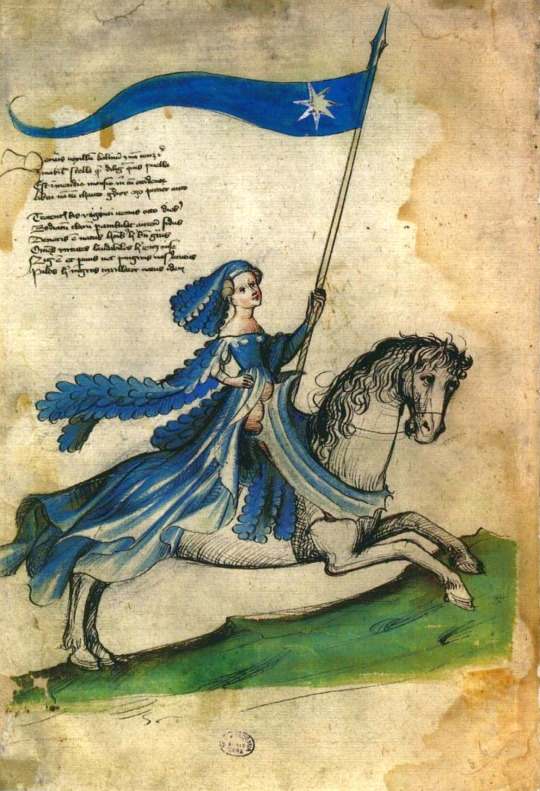
Barbara of Celje (also Barbara of Cilli) was (most likely) born in 1392 as the 5th and youngest child of count Hermann II of Celje and countess Anna of Schaunberg. Through her marriage to Sigismund of Luxembourg, which (probably) occured in 1405, she was Queen of Hungary (1405), Queen of the Romans (1411), Queen of Bohemia (1419) and Holy Roman Empress (1433).
The Counts of Celje were a prominent late medieval family, rising from the position of mere vassals to the Habsburgs (with whom they were often in conflict) to Princes of the Holy Roman Empire subordinate only to the Emperor in a relatively short time span, owing mainly to the political ability and military prowess of Barbara’s father Hermann. By saving the life of Sigismund of Luxembourg not once, but twice (first in the Battle of Nicopolis against the Ottomans in 1396 and then again when he was kidnapped by the Hungarian nobility in 1401), Hermann ensured his youngest daughter Sigismund’s hand in marriage. The Celje family was a good choice for Sigismund as well, since they were contenders for the Bosnian throne (and they eventually became heirs presumptive in 1427), had good connections in the Balkans (Hermann’s eldest son Frederick was married to Elisabeth of Frankopan, Frankopans being the most influential family in the region at the time), but also because Barbara’s cousin Anna of Celje was the new Polish queen (by marrying her – the granddaughter of Casimir III who was the last Polish king of the Piast dynasty – Vladislaus II Jagiellon solidified his rule after the death of his wife Jadwiga, queen regnant of Poland).
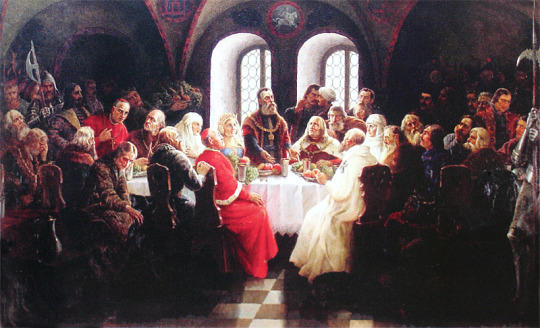
Queen Barbara herself was an important figure, serving as regent when Sigismund was absent and she was a capable manager of her own fiefdoms. Alongside her husband, she appeared at the Council of Constance (1414-1418) (the two pictures at the top {x} {x}), which ended the Western Schism, and the Congress of Lutsk (1429) (the picture above {x}, Sigismund can be seen standing in the centre with Barbara sitting on his right). She was instrumental in creating the Order of the Dragon (1408), whose most notable member is probably Vlad III Dracul or Vlad the Impaler. She was the only woman named in the founding document and the only woman to be its member (by virtue of being its founder).
Barbara was, however, not paticularly popular among many nobles who thought she was too sympathetic to the cause of the Hussites (it should be noted that she is also often considered in modern examinations of agnosticism and atheism in medieval times) and they accused her of adultery, which led to a strain in her marriage with Sigismund. She was dubbed “the Messalina of Germany” by Aeneas Sylvius Piccolomini, who went on to become Pope Pius II years later. It didn’t help that she was a knowledgeable woman and an alchemist, which earned her the epithet “Black Queen” among the common folk.
Toward the end of Sigismund’s reign she conspired against her son-in-law Albert II of Germany (a Habsburg by birth, married to her only child, Elisabeth of Luxembourg), supposedly so that in the event of Sigismund’s death, the future Polish king Casimir IV would inherit his titles instead of Albert, as well as take her as his wife – the latter might have been a made-up exaggeration, more likely she merely made plans for her granddaughters: one would indeed marry Casimir (which did eventually happen when Elisabeth of Austria married him), while the other would marry his brother Vladislaus III, who was king before him. But the plot was revealed, to the great ire of Barbara’s husband, who banished her to the castle in Znojmo. After Sigismund’s death the same year in 1437, when she lost all the titles that came along with the marriage, she left for Poland and only returned to Bohemia in 1441, two years after her arch-rival Albert died. She spent the last 10 years of her life in Mělník, protected by her loyal Bohemian nobles, notably George of Poděbrady, supporting the political advances of her daughter Elisabeth of Luxembourg and, after the latter’s death, her grandson Ladislaus V the Posthumous.
She died of the plague in 1451. She is buried in the Royal Crypt in St. Vitus Cathedral in Prague. Even though she only ever bore one daughter, Barbara of Celje is the ancestress of most, if not all European royal houses that lived in the following centuries.
#as far as n*bles go she was quite ok#slovenia#slovene people#*insomuch as people at that time were slovene#barbara of celje#barbara of cilli#counts of celje#counts of cilli#celje
207 notes
·
View notes
Text
Născut la Praga în ziua de 3 iulie 1883, Franz Kafka (m. 3 iunie 1924, Kierling, Austria) era fiul lui Hermann Kafka (1852 – 1931), negustor şi fabricant, şi al Juliei (1856 – 1934), născută Löwy, într-o familie bogată din Poděbrady.
Cei doi fraţi, Georg şi Heinrich, mai tineri decât viitorul scriitor, mor la vârsta copilăriei. Surorile sale, Gabrielle (Elli), Valerie (Valli), Otillie (Ottla), născute în 1889, 1890, 1892, aveau să-şi găsească sfârşitul în timpul celui de-al doilea război mondial, în ghetto-ul de la Łódź, unde fuseseră deportate. Numele Kafka (Kavka), spune Max Brod, prietenul cel mai apropiat şi editorul unei părţi importante a operei lui Franz Kafka, după moartea scriitorului, era răspândit printre evreii cehi. ”Kavka” înseamnă ”stăncuţă alpină cu capul mare şi coada stufoasă”.
Această pasăre era emblema de pe firma magazinului lui Hermann şi apărea pe plicurile folosite de Franz Kafka în tinereţe. Germana era limba maternă a cel puţin 10% din populaţia oraşului Praga la sfârşitul secolului al XIX-lea.
Relaţia dificilă dintre tată şi fiu domină copilăria lui Kafka, înscris la şcoala primară de la Fleischmarket (Piaţa de carne), în str. Másna, unde primeşte o educaţie limitată. În 1901 absolvă Gimnaziul Altstädter. Este interesat de literatură şi de ideile socialiste, scrie câteva scenete de teatru jucate în familie de surorile sale. E preocupat de teatrul lui Ibsen şi de teoria darwinistă, îi citeşte pe Spinoza, Nietzsche, Hofmannsthal, Flaubert Brentano, Kleist. ”Casa Buddenbrook” (1901) de Thomas Mann îl entuziasmează, la fel ca şi proza marilor scriitori ruşi. În perioada 1901 – 1906 studiază, timp de două semestre, germanistica, apoi dreptul la Universitatea Germană din Praga. În 18 iunie obţine titlul de doctor în drept. Un an şi jumătate face practică în biroul de avocatură al unui unchi, pentru ca în iulie 1908 să intre în serviciul Companiei de asigurări împotriva accidentelor, unde va lucra până la pensionare, în 1922. Conştiincios, suportă cu resemnare mediocritatea carierei de funcţionar. Din 1907 datează povestirile care vor apărea în 1958 în volumul ”Pregătiri de nuntă la ţară”, ”Descrierea unei lupte”, ”Odradek” ş.c.l., menţionate de Max Brod în revista berlineză ”Die Gegenwart”. În 1910 începe scrierea ”Jurnalului” şi călătoreşte cu Max Brod la Paris. 1912 este un an decisiv pentru activitatea prozatorului. Începe să scrie romanul ”America” (”Dispărutul”), în noiembrie–decembrie scrie nuvela ”Metamorfoza”, publicată după trei ani, în decembrie citeşte în public ”Verdictul”. În iunie 1914 se logodeşte la Berlin cu Felice Bauer, dar după o lună rupe logodna. A doua logodnă cu Felice Bauer va avea o soartă asemănătoare, fiind ruptă după câteva luni, în decembrie 1917, după ce i se pusese diagnosticul de tuberculoză pulmonară. În noiembrie 1916, citise în public, la München, ”Colonia penitenciară”, publicată în 1919, când se logodeşte cu Julie Wohryzeck. ”Scrisoare către tata”, mărturia cea mai elocventă a complexului de inferioritate trăit de Franz Kafka, apare în noiembrie 1919, în Silezia:
”Dragă tată,
M-ai întrebat nu de mult de ce spun că mă tem de tine. Ca de obicei n-am fost în stare să-ţi dau nici un răspuns, pe de o parte tocmai fiindcă mă tem de tine şi pe de altă parte fiindcă explicaţia acestui sentiment e mult prea complexă pentru ca s-o pot face prin viu grai. Şi dacă încerc să-ţi dau un răspuns în scris, nu va fi nici el decât foarte aproximativ, deoarece până şi în scris teama şi consecinţele ei rămân un obstacol în relaţiile dintre noi doi şi pentru că am atât de mult material încât îmi depăşeşte şi memoria şi puterea de înţelegere.”
Acest complex trăit cu intensitate, explicabil doar până la un punct prin elementele biografice, aproape straniu, dacă nu cumva absurd, se resimte din plin în ”Verdictul”, ”America” şi ”Metamorfoza”.
Kafka și realismul absurd
”Metamorfoza” (”Die Verwandlung”) este povestea noii vieţi a comerciantului Gregor Samsa, care se trezeşte într-o dimineaţă transformat într-o insectă, probabil un gândac. Nimeni nu-l înţelege, nici măcar şeful care, venit să-l ia la muncă, pleacă nervos. Această alegorie coşmarescă, spune Kafka în ”Convorbirile cu Gustav Janouch”, ”nu este o confesiune, ci într-un anume sens, o indiscreţie autobiografică”. Samsa ”sună ca o criptogramă pentru Kafka.” ”Gregor Samsa este celibatarul sisific, motivaţia lui în existenţă fiind una de ordin funcţional. Transformarea lui în miriapod, anulat ca individ ce-şi poate motiva dreptul la viaţă, alienat de părinţi, privat de amorul sororal, Gregor Samsa acceptă moartea ca o necesitate, într-o lume situată sub zodia utilului.” (Romul Munteanu, Prefaţă la vol. Franz Kafka, ”Procesul”, Bucureşti, Editura Minerva, BPT, 1977).
”Metamorfoza” este ”înainte de toate povestea unui om care se vede abandonat de semenii săi. Pentru Gregor, viitorul profesional, viaţa familială şi socială sunt definitiv compromise. Orice nouă încercare de revenire este exclusă. […] Se regăseşte aici o constantă a tematicii lui Kafka: absenţa sensului vieţii. Nici o problemă metafizică în Metamorfoza. Trebuie văzut exact ceea ce este. Nimeni nu se întreabă care ar fi motivul ştiinţific al metamorfozei. Ea s-a petrecut, pur şi simplu, ca o fatalitate care poate cădea pe capul oricui, în orice moment. Nu poţi schimba nimic şi este inutil să te întrebi care este motivul. Viaţa, pe cât de absurdă, trebuie trăită aşa cum e; dacă nu, rămâne întotdeauna moartea… Iată de ce elementul fantastic inevitabil în punctul de plecare al Metamorfozei este repede eliminat de un realism absurd.” (Walter Paisley).
În decembrie 1920, după ce în vară se îndrăgostise de jurnalista cehă Milena Jerenská, Franz Kafka este internat în sanatoriul Matliary din Munţii Tatra. Boala se agravează. În 1922 lucrează la romanul ”Castelul”, care va apărea postum, în 1926, ca şi ”Procesul” (1925), scrie ”Cercetările unui câine” şi ”Un artist al foamei”. În 1923 doreşte să se însoare cu Dora Dymant, pe care o cunoscuse în staţiunea balneară Müritz. Hermann Kafka se opune căsătoriei. În 17 martie 1924 este adus de Max Brod în casa părintească de la Praga, în stare gravă. Tratamentul în sanatoriul de la Kierling, lângă Viena, rămâne fără rezultate. Moare în 3 iunie 1924. Este înmormântat în 11 iunie, în Cimitirul evreiesc din Praga.
Ce s-ar fi întâmplat dacă Max Brod ar fi urmat dorința lui Kafka de a-i distruge manuscrisele? Cu dispariția a două dintre cele mai importante scrieri ale sale, romanele ”Castelul” și ”Procesul”, influența lui Kafka nu ar fi fost, fără îndoială, atât de puternică pentru proza modernă și în general pentru filosofia absurdului și toate derivatele ei, atât de cultivate de existențialiști. Nu vreau să spun că opera sa ar fi fost una de plan secund, dar interesul acordat ”Coloniei penitenciare”, ”Metamorfozei” și altor povestiri nu ar fi putut egala faima dobîndită cu cele două romane, de referință pentru viziunea asupra condiției umane la mijlocul secolului al XX-lea. Universul kafkian, cu nota lui specifică de presiune psihologică, vină necunoscută, acuzații absurde, birocrație monstruoasă, claustrare, coșmar, a impus o reconsiderare nu numai a unor teme consacrate, a sondării psihologiei abisale și a problemei libertății, ci și la nivelul scriiturii. În miezul cotidianului celui mai banal se află absurdul existențial, în înlănțuirea logică, firească, a vieții apare inexplicabilul, care naște monstruosul. Albert Camus observa că ”la Kafka cele două lumi sunt cea a vieţii cotidiene, pe de o parte, şi cea a neliniştii supranaturale, pe de altă parte. Se pare că asistăm aici la o nesfârșită exploatare a cuvintelor lui Nietzsche: «Marile probleme se întâlnesc în stradă». Există în condiţia umană – e un loc comun al tuturor literaturilor – o absurditate fundamentală şi în acelaşi timp o implacabilă măreţie. Amândouă coincid, cum e şi firesc. Amândouă sunt întruchipate, să o mai spunem o dată, în divorţul ridicol care desparte necumpătatele noastre elanuri sufleteşti de bucuriile pieritoare ale trupului. Absurdul stă în faptul că sufletul acestui trup îl depăşeşte atât de nemărginit. Cel ce vrea să reprezinte această absurditate va trebui să-i dea viaţă printr-un joc de contraste paralele. Astfel, Kafka exprimă tragedia prin cotidian şi absurdul prin logică.”
”Odradek”, un text de nici două pagini din ”Pregătiri de nuntă la ţară”, este una dintre cele mai stranii şi enigmatice povestiri ale lui Kafka, semnificativă pentru imaginarul scriitorului. O reproducem integral, în traducerea lui Saşa Pană:
”Unii spun că vorba Odradek e de origine slavă şi plecând de la această teză, caută să-i demonstreze formarea. Alţii pretind că, dimpotrivă, acest cuvânt este de origine germană; slava l-ar fi înrâurit numai. Nesiguranţa celor două interpretări îngăduie, pe bună dreptate, să se conchidă că nici una din amândouă nu este exactă, cu atât mai mult cu cât nici una din ele nu poate să dea sensul acestei vocabule.
Fireşte, nimeni nu s-ar gândi să se dedea la astfel de studii, dacă n-ar exista de fapt o fiinţă care se numeşte Odradek. La prima vedere, ea oferă înfăţişarea unei bobine turtite în formă de stea şi pare în adevăr încolăcită de aţă; la drept vorbind, ar putea foarte bine să fie capete vechi de aţă încâlcite şi încurcate, de cele mai felurite culori şi grosimi. Or, nu-i o simplă bobină : în centrul stelei se ridică un bastonaş pieziş, la care se adaugă unul în unghi drept. Cu ajutorul acestuia din urmă, de-o parte, şi cu una din razele stelei de cealaltă, totul se ţine ridicat ca pe două picioare.
Ai fi îndemnat să crezi că lucrul ăsta a avut odată o formă bună la oarecare întrebuinţare şi acum s-ar fi spart. Se pare că nu-i aşa: cel puţin nici o urmă nu o probează; nici o spărtură nu permite să se bănuiască aşa ceva. Totul pare, e adevărat, lipsit de sens, dar în felul său complet. Nu s-ar putea să i se adauge ceva, cu atât mai mult cu cât Odradek este extraordinar de agil şi de nepătruns.
El stă pe rând în grânar, în cuşca de sub scară, pe culoare, în sală. Pot trece, câteodată, luni întregi fără să fie văzut: fără îndoială că atunci a emigrat în alte locuinţe. Uneori, când înaintează pe palier şi-l zăreşti în jos, sprijinit de balustrada scării, îţi vine să-i vorbeşti. Bineînţeles, nu i se adresează chestiuni grele, ci e tratat – micimea sa te invită la asta – ca un copil. «Cum te numeşti?» îl întrebi. «Odradek», spune el. «Şi unde locuieşti?» Iar dânsul răspunde «Domiciliu nesigur» şi râde; dar cu un râs ce s-ar putea scoate fără plămâni, ceva care fâşâie ca frunzele moarte sub picioare. De cele mai dese ori conversaţia se termină cu atâta. Şi de altfel chiar răspunsurile acestea nu se pot căpăta totdeauna; adesea rămâne mult timp mut ca şi lemnul din care pare făcut.
Degeaba mă întreb ce va ajunge. Poate măcar să moară? Tot ceea ce moare a cunoscut un fel de scop, un fel de activitate care l-a consumat: nu este cazul pentru Odradek. Îl vom mai vedea mâine, trăgând după el capete de aţă, rostogolindu-se pe scară la picioarele copiilor mei? El nu strică poate nimănui, dar gândul, numai, că ar putea să-mi supravieţuiască, ideea asta îmi este aproape dureroasă.”
Arhiva rubricii Filă de calendar
”95 de ani de la moartea lui Franz Kafka” de Costin Tuchilă Născut la Praga în ziua de 3 iulie 1883, Franz Kafka (m. 3 iunie 1924…
0 notes
Photo
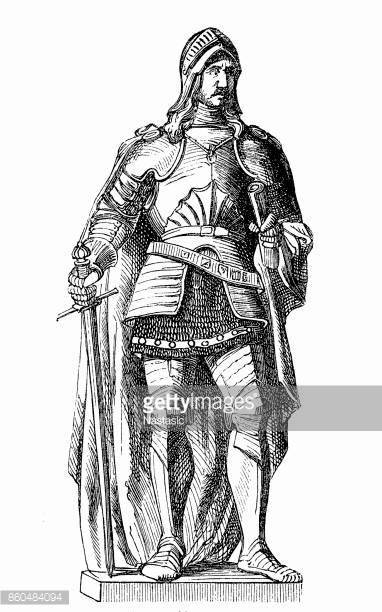
01-04 Illustration of a George of Poděbrady ,King of Bohemia (1458–1471) #podebrady http://dlvr.it/Q8vNxX
0 notes
Photo
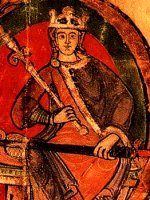

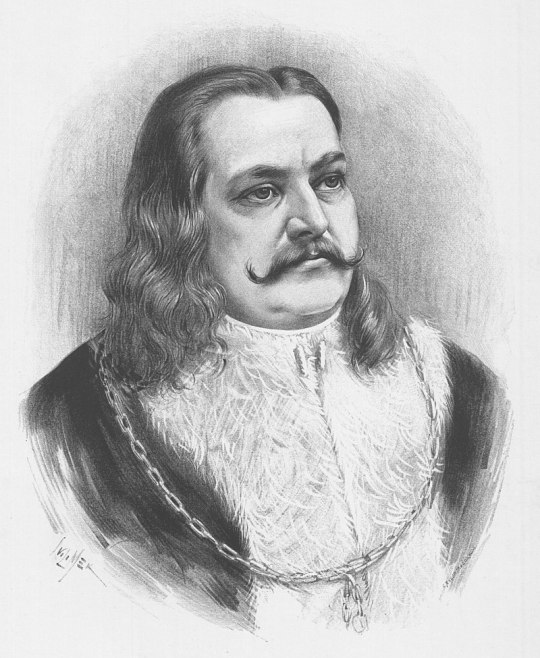
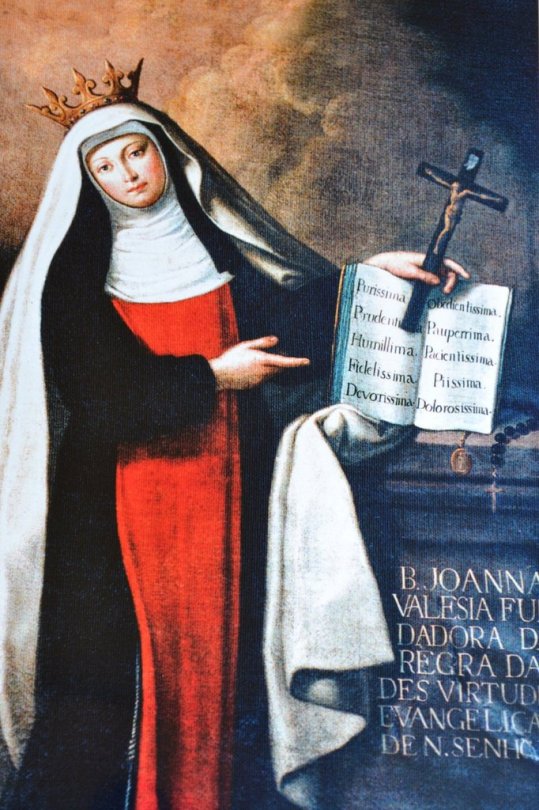

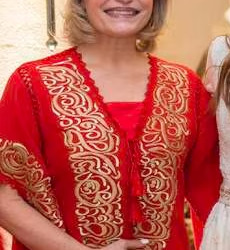
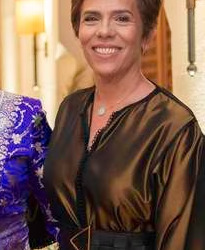



Royal Birthdays for today, April 23rd:
Malcolm IV, King of Scotland, 1141
Afonso II, King of Portugal, 1185
George of Poděbrady, King of Bohemia, 1420
Joan of France, Queen of France, 1464
Charlotte Amalie of Holstein-Plön, Duchess of Schleswig-Holstein-Sonderburg-Augustenburg, 1744
Aisha bint Al Hussein, Princess of Jordan, 1968
Zein bint Al Hussein, Princess of Jordan, 1968
Gabriella Kingston, Daughter of Prince Michael of Kent, 1981
Laetitia Maria of Belgium, Archduchess of Austria-Este, 2003
Louis of Wales, British Prince, 2018
#prince louis#Laetitia Maria of Belgium#gabriella kingston#Zein bint Al Hussein#Aisha bint Al Hussein#Charlotte Amalie of Holstein-Plön#joan of france#George of Poděbrady#afonso ii#malcolm iv#long live the queue#royal birthdays
23 notes
·
View notes
Text
Events 3.2
537 – Siege of Rome: The Ostrogoth army under king Vitiges begins the siege of the capital. Belisarius conducts a delaying action outside the Flaminian Gate; he and a detachment of his bucellarii are almost cut off.
986 – Louis V becomes the last Carolingian king of West Francia after the death of his father, Lothaire.
1331 – Fall of Nicaea to the Ottoman Turks after a siege.
1444 – Skanderbeg organizes a group of Albanian nobles to form the League of Lezhë.
1458 – George of Poděbrady is chosen as the king of Bohemia.
1476 – Burgundian Wars: The Old Swiss Confederacy hands Charles the Bold, Duke of Burgundy, a major defeat in the Battle of Grandson in Canton of Neuchâtel.
1484 – The College of Arms is formally incorporated by Royal Charter signed by King Richard III of England.
1498 – Vasco da Gama's fleet visits the Island of Mozambique.
1657 – The Great Fire of Meireki begins in Edo (now Tokyo), Japan, causing more than 100,000 deaths before it exhausts itself three days later.
1776 – American Revolutionary War: Patriot militia units attempt to prevent capture of supply ships in and around the Savannah River by a small fleet of the Royal Navy in the Battle of the Rice Boats.
1791 – Claude Chappe demonstrates the first semaphore line near Paris.
1797 – The Bank of England issues the first one-pound and two-pound banknotes.
1807 – The U.S. Congress passes the Act Prohibiting Importation of Slaves, disallowing the importation of new slaves into the country.
1811 – Argentine War of Independence: A royalist fleet defeats a small flotilla of revolutionary ships in the Battle of San Nicolás on the River Plate.
1815 – Signing of the Kandyan Convention treaty by British invaders and the leaders of the Kingdom of Kandy.
1836 – Texas Revolution: The Declaration of independence of the Republic of Texas from Mexico is adopted.
1855 – Alexander II becomes Tsar of Russia.
1859 – The two-day Great Slave Auction, the largest such auction in United States history, begins.
1865 – East Cape War: The Völkner Incident in New Zealand.
1867 – The U.S. Congress passes the first Reconstruction Act.
1877 – Just two days before inauguration, the U.S. Congress declares Rutherford B. Hayes the winner of the 1876 U.S. presidential election even though Samuel J. Tilden had won the popular vote.
1882 – Queen Victoria narrowly escapes an assassination attempt by Roderick Maclean in Windsor.
1901 – United States Steel Corporation is founded as a result of a merger between Carnegie Steel Company and Federal Steel Company which became the first corporation in the world with a market capital over $1 billion.
1901 – The U.S. Congress passes the Platt Amendment limiting the autonomy of Cuba, as a condition of the withdrawal of American troops.
1903 – In New York City the Martha Washington Hotel opens, becoming the first hotel exclusively for women.
1917 – The enactment of the Jones–Shafroth Act grants Puerto Ricans United States citizenship.
1919 – The first Communist International meets in Moscow.
1932 – Finnish president P. E. Svinhufvud gives a radio speech, which four days later finally ends the Mäntsälä Rebellion and the far-right Lapua Movement that started it.
1937 – The Steel Workers Organizing Committee signs a collective bargaining agreement with U.S. Steel, leading to unionization of the United States steel industry.
1939 – Cardinal Eugenio Pacelli is elected Pope and takes the name Pius XII.
1941 – World War II: First German military units enter Bulgaria after it joins the Axis Pact.
1943 – World War II: During the Battle of the Bismarck Sea Allied aircraft defeated a Japanese attempt to ship troops to New Guinea.
1949 – Captain James Gallagher lands his B-50 Superfortress Lucky Lady II in Fort Worth, Texas, after completing the first non-stop around-the-world airplane flight in 94 hours and one minute.
1955 – Norodom Sihanouk, king of Cambodia, abdicates the throne in favor of his father, Norodom Suramarit.
1962 – In Burma, the army led by General Ne Win seizes power in a coup d'état.
1962 – Wilt Chamberlain sets the single-game scoring record in the National Basketball Association by scoring 100 points.
1965 – The US and Republic of Vietnam Air Force begin Operation Rolling Thunder, a sustained bombing campaign against North Vietnam.
1968 – Baggeridge Colliery closes marking the end of over 300 years of coal mining in the Black Country.
1969 – In Toulouse, France, the first test flight of the Anglo-French Concorde is conducted.
1970 – Rhodesia declares itself a republic, breaking its last links with the British crown.
1972 – The Pioneer 10 space probe is launched from Cape Canaveral, Florida with a mission to explore the outer planets.
1977 – Libya becomes the Socialist People's Libyan Arab Jamahiriya as the General People's Congress adopted the "Declaration on the Establishment of the Authority of the People".
1978 – Czech Vladimír Remek becomes the first non-Russian or non-American to go into space, when he is launched aboard Soyuz 28.
1978 – The late iconic actor Charlie Chaplin's coffin is stolen from his grave in Switzerland.
1983 – Compact discs and players are released for the first time in the United States and other markets. They had previously been available only in Japan.
1989 – Twelve European Community nations agree to ban the production of all chlorofluorocarbons (CFCs) by the end of the century.
1990 – Nelson Mandela is elected deputy president of the African National Congress.
1991 – Establishment of Kuwait Democratic Forum, center-left political organization in Kuwait.
1991 – Battle at Rumaila oil field brings an end to the 1991 Gulf War.
1992 – Start of the war in Transnistria.
1992 – Armenia, Azerbaijan, Kazakhstan, Kyrgyzstan, Moldova, San Marino, Tajikistan, Turkmenistan and Uzbekistan, all of which (except San Marino) were former Soviet republics, join the United Nations.
1995 – Researchers at Fermilab announce the discovery of the top quark.
1998 – Data sent from the Galileo spacecraft indicates that Jupiter's moon Europa has a liquid ocean under a thick crust of ice.
2002 – U.S. invasion of Afghanistan: Operation Anaconda begins, (ending on March 19 after killing 500 Taliban and al-Qaeda fighters, with 11 Western troop fatalities).
2004 – War in Iraq: Al-Qaeda carries out the Ashoura Massacre in Iraq, killing 170 and wounding over 500.
2012 – A tornado outbreak occurs over a large section of the Southern United States and into the Ohio Valley region, resulting in 40 tornado-related fatalities.
2017 – The elements Moscovium, Tennessine, and Oganesson are officially added to the periodic table at a conference in Moscow, Russia.
0 notes
Photo
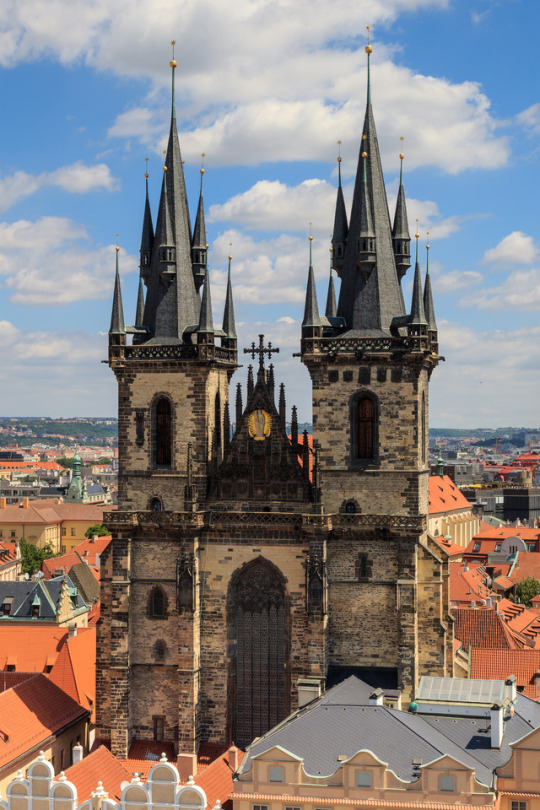
A. Savin. Church of Our Lady Before Tyn. 2016. Creative Commons.
The construction of the church began in the 14th century in the late gothic style and has since been the main church within the region. In 1620, after losing the battle of White Mountain, the district underwent the harsh era of catholic reformation (i.e. Counter Reformation) where the sculptures of King George of Poděbrady and a large chalice on the church were taken down and replaced by a sculpture of Virgin Mary and a halo respectively. In 1679, the church was hit by lightning and fire which destroyed the structure of the old vault. It was subsequently replaced with a lower baroque vault. The baroque style emerged across Europe in the late 16th century, especially in areas where Catholicism predominated, where architecture and art reflected counter reformation goals.
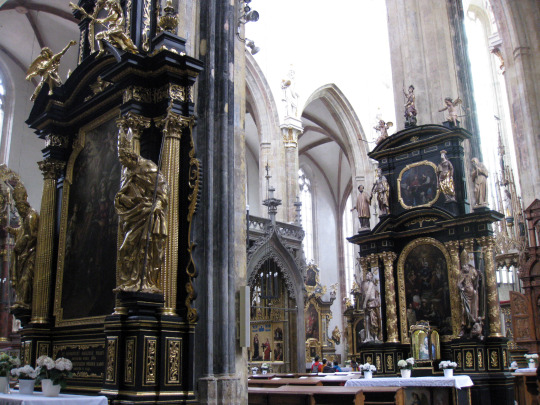
Enfo. Interior of Church of Our Lady of Tyn. 2012. Creative Commons.
1 note
·
View note
Photo

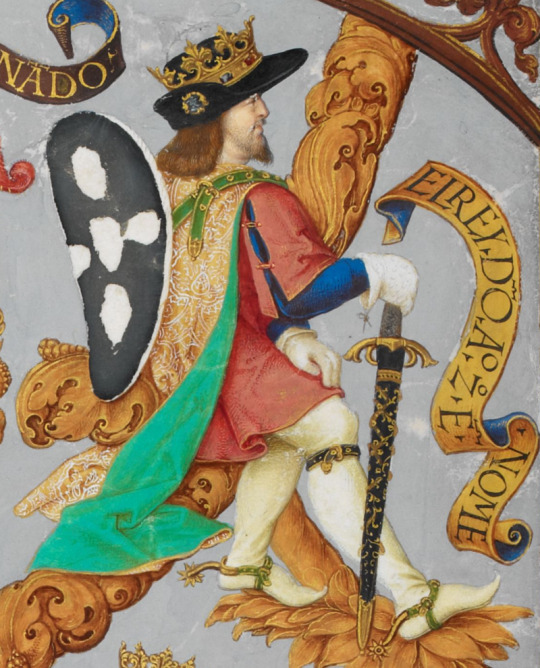
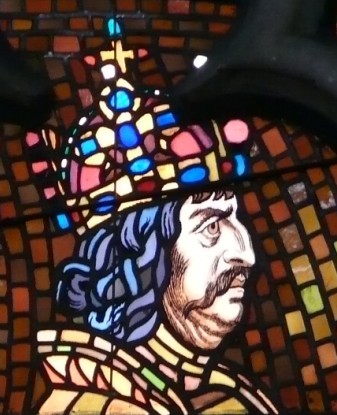
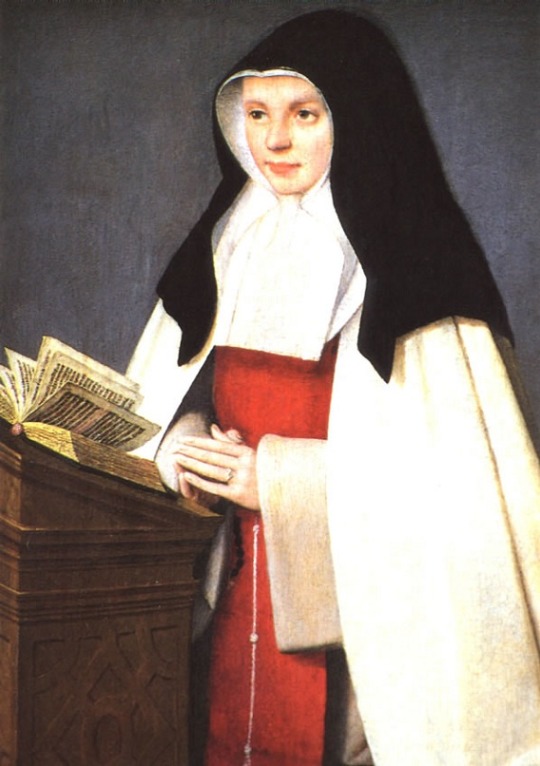






Royal Birthdays for today, April 23rd:
Malcolm IV, King of Scotland, 1141
Afonso II, King of Portugal, 1185
George of Poděbrady, King of Bohemia, 1420
Joan of France, Queen of France, 1464
Charlotte Amalie of Holstein-Plön, Duchess of Schleswig-Holstein-Sonderburg-Augustenburg, 1744
Aisha bint Al Hussein, Princess of Jordan, 1968
Zein bint Al Hussein, Princess of Jordan, 1968
Gabriella Kingston, Daughter of Prince Michael of Kent, 1981
Laetitia Maria of Belgium, Archduchess of Austria-Este, 2003
Louis of Cambridge, British Prince, 2018
#prince louis#gabriella kingston#Zein bint Al Hussein#Aisha bint Al Hussein#joan of france#Charlotte Amalie of Holstein-Plön#George of Poděbrady#afonso ii#malcolm iv#long live the queue#royal birthdays#Laetitia Maria of Belgium
6 notes
·
View notes
Photo



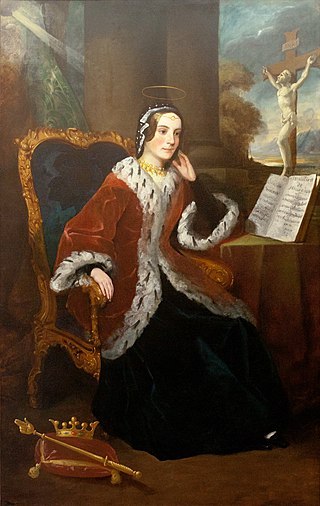

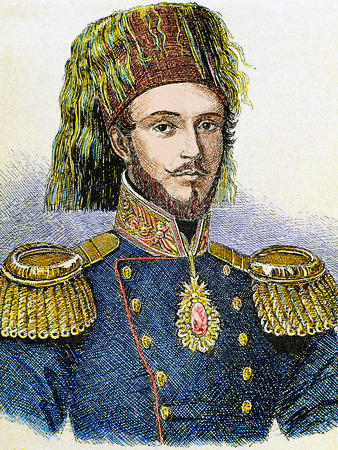




Royal Birthdays for today, April 23rd:
Malcolm IV, King of Scotland, 1141
Afonso II, King of Portugal, 1185
George of Poděbrady, King of Bohemia, 1420
Joan of France, Queen of France, 1464
Charlotte Amalie of Holstein-Plön, Duchess of Schleswig-Holstein-Sonderburg-Augustenburg, 1744
Abdülmecid I, Ottoman Sultan, 1823
Aisha bint Al Hussein, Princess of Jordan, 1968
Zein bint Al Hussein, Princess of Jordan, 1968
Gabriella Kingston, Daughter of Prince Michael of Kent, 1981
Louis of Cambridge, British Prince, 2018
#prince louis#gabriella kingston#joan of france#Zein bint Al Hussein#Aisha bint Al Hussein#Abdülmecid I#Charlotte Amalie of Holstein-Plön#George of Poděbrady#afonso ii#malcolm iv#long live the queue#royal birthdays
23 notes
·
View notes
Photo

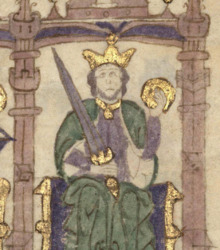
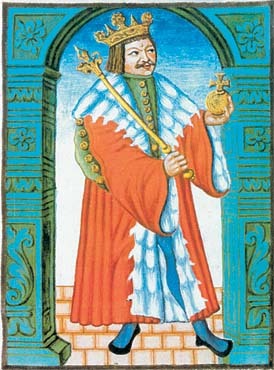

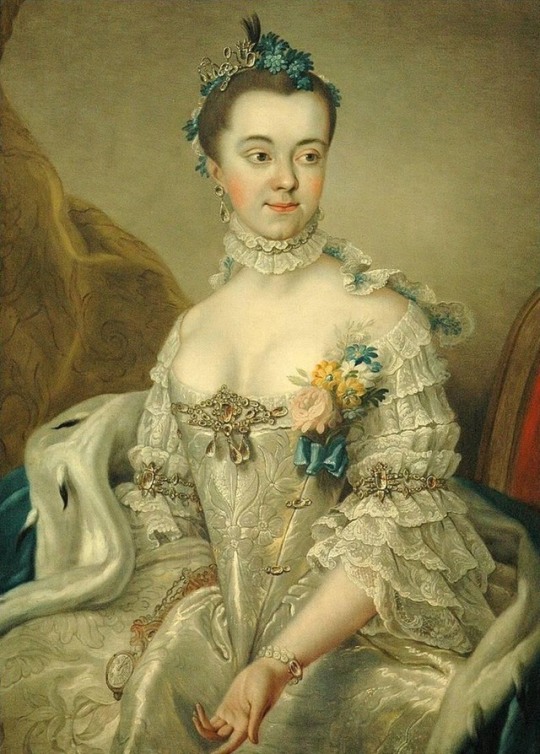





Royal Birthdays for today, April 23rd:
Malcom IV, King of Scotland, 1141
Afonso II, King of Portugal, 1185
George of Poděbrady, King of Bohemia, 1420
Joan of France, Queen of France, 1464
Charlotte Amalie of Holstein-Plön, Duchess of Schleswig-Holstein-Sonderburg-Augustenburg, 1744
Abdülmecid I, Ottoman Sultan, 1823
Aisha bint Al Hussein, Princess of Jordan, 1968
Zein bint Al Hussein, Princess of Jordan, 1968
Gabriella Windsor, Daughter of Prince Michael of Kent, 1981
Louis of Cambridge, British Prince, 2018
#prince louis#gabriella windsor#joan of france#Abdülmecid I#Zein bint Al Hussein#Aisha bint Al Hussein#Charlotte Amalie of Holstein-Plön#George of Poděbrady#Afonso II#malcolm iv#long live the queue#royal birthdays
16 notes
·
View notes